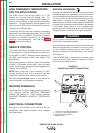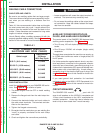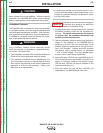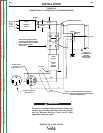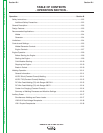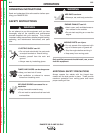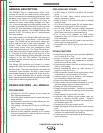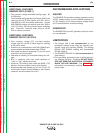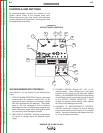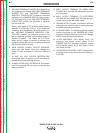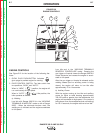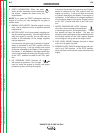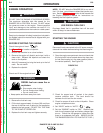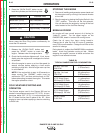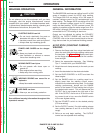
Return to Section TOC Return to Section TOC Return to Section TOC Return to Section TOC
Return to Master TOC Return to Master TOC Return to Master TOC Return to Master TOC
OPERATION
B-4 B-4
RANGER 300 D AND 300 DLX
ADDITIONAL FEATURES
RANGER 300 D (K1522-1)
• One constant voltage wire-feed welding range - 80
to 200 amps.
The wire feed setting permits the Ranger 300D to be
used with the LN-25 Wire Feeder and .035, .045 or
.068 NR®-211-MP Innershield electrodes. Limited
MIG (GMAW) welding can also be done with .030 or
.035 L-50 and L-56 using blended Argon shielding
gas. “Auto-Idle” functions when using an LN-25
with an internal contactor.
ADDITIONAL FEATURES
RANGER 300 DLX (K1522-2)
• Four constant voltage (CV) wire-feed welding
ranges with fine control on each range for welding
at 40 to 300 amps.
• Excellent arc characteristics with MIG (GMAW) and
recommended Innershield electrodes (FCAW).
• Wire feeder amphenol receptacle (14-pin) for quick
connection of control cable.
• Voltmeter for reading CV wire-feed welding arc volt-
age.
• Built in contactor with front panel selection of
“cold” or “hot” welding terminals.
• Aluminum TIG welding when used with K930-1 TIG
Module. Output contactor control with Amptrol.
• Recommended wire feeders are the LN-25 with 42
Volt Remote Output Control Module or with internal
contactor and all models of the LN-7.
RECOMMENDED APPLICATIONS
WELDER
The RANGER 300 provides excellent constant current
AC/DC welding output for stick (SMAW) welding and
for TIG welding, and it offers constant voltage output
for DC semiautomatic wire feed welding.
GENERATOR
The RANGER 300 gives AC generator output for medi-
um use demands.
LIMITATIONS
• The Ranger 300 is not recommended for any
processes besides those that are normally per-
formed using stick welding (SMAW), TIG welding
(GTAW), MIG (GMAW) welding and Innershield®
(FCAW) welding.
• The RANGER 300 D/DLX is not recommended for
pipe thawing.
• During welding, generator power is limited and out-
put voltages can drop. Therefore, DO NOT OPER-
ATE ANY SENSITIVE ELECTRICAL EQUIPMENT
WHILE YOU ARE WELDING. See Table B.5 for
permissible simultaneous welding and auxiliary
power loads.



